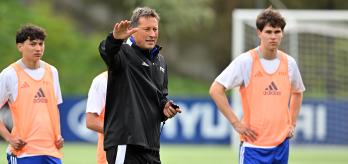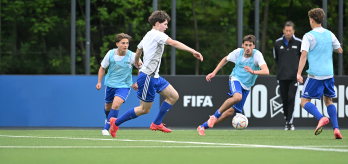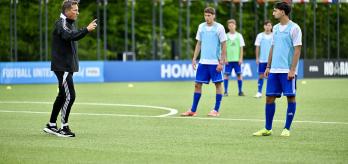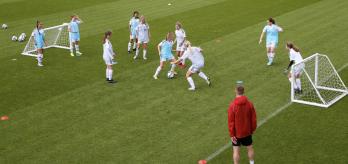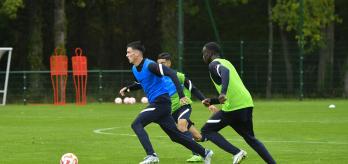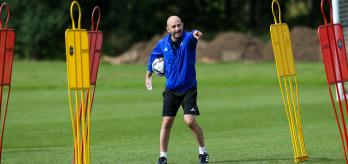Watch the tournament unfold in the video below.
The setup
Three teams of seven players compete in a round-robin format. Matches are played on half a pitch with reduced width, creating a compact and high-pressure environment.
-
Free play with the offside rule applying from the halfway line.
-
Two gates are placed on the halfway line. Teams earn extra points by dribbling through them.
-
Throw-ins are played, but corner kicks are replaced by restarts from the goalkeeper.
-
Goals are rewarded — if a team scores, they keep possession.
-
Each game lasts 2 minutes, followed by a short active recovery break.
-
Teams rotate after each round.
-
Points are tracked, and the team with the most points wins the tournament.
Deliberate practice design
-
Tournament format: The competitive format increases pressure, driving intensity and focus while replicating real match situations.
-
Work–rest ratio: Short two-minute games with active recovery periods sustain high intensity and keep players sharp and engaged.
-
Rule constraints: Gates on the halfway line force defenders to press high and defend forward, rather than dropping deep to protect the goal.
-
Quick restarts: Rapid transitions after goals or out-of-play situations maintain tempo and reward urgency.
-
Coaching interventions: Schmidt uses player circles and live on-field demonstrations to clarify and instil tactical behaviours.
-
Mentality and exaggeration: Players are encouraged to push limits, exaggerate pressing behaviours and embrace the intensity needed to develop an extreme style.
Five Key Principles of Schmidt’s Pressing Philosophy
Ballorientierung – Defenders use the ball as their primary reference point, not the opponent. The team shifts collectively towards the ball to:
-
Compress space around it
-
Create numerical superiority
-
Maintain compactness and mutual support
This principle underpins Schmidt’s approach to pressing: the ball dictates the team’s shape and movement.
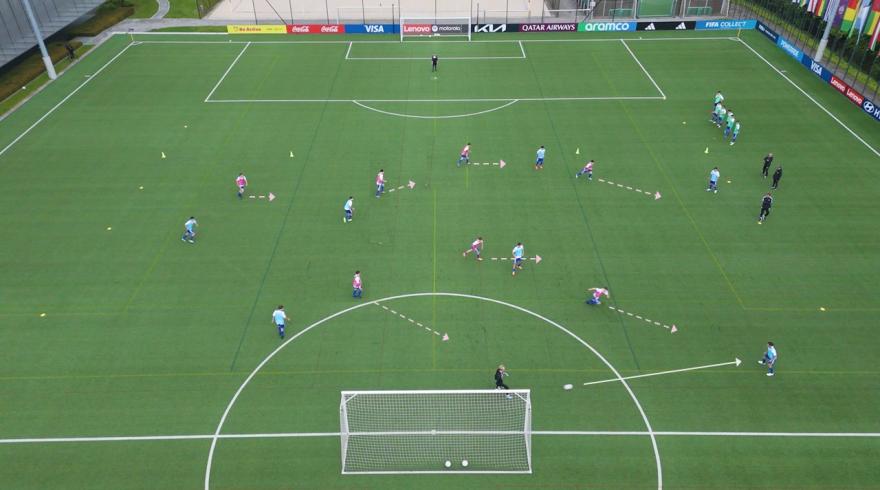
Schwarmverhalten – The team moves as a synchronised unit, maintaining vertical and horizontal compactness. When one player presses, others follow, creating a net of pressure and enabling pressing in waves. If the first line is broken, the next player is already in position to continue the press. Key objectives include:
-
Stay compact
-
Maintain pressure after the first line is broken
-
Create a web of pressure that suffocates the opponent’s build-up
This principle enables Schmidt’s teams to press in waves without losing structure.
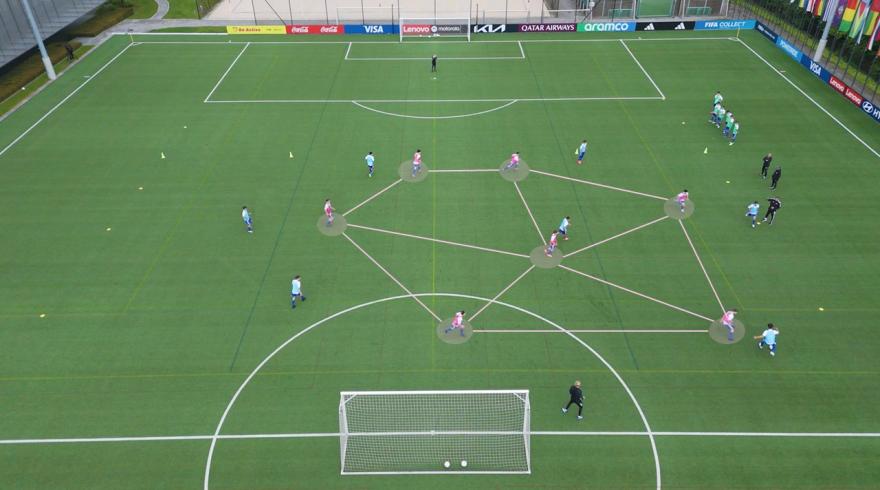
Schwimmen – A player positions themselves between multiple opponents, covering several options without committing to one. This allows them to:
-
Block multiple passing lanes
-
React flexibly in different directions
-
Stay mobile and unpredictable
This behaviour is especially effective in fluid, high-intensity pressing systems.
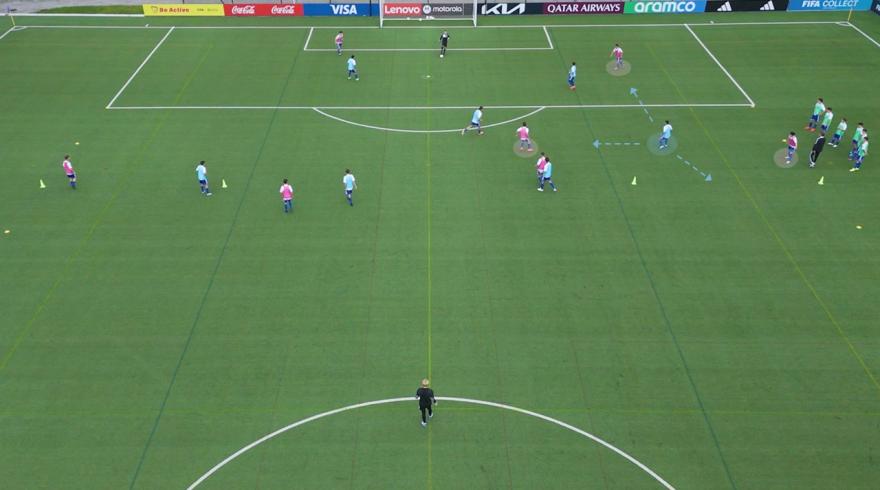
Im Sprint anlaufen – Players press in straight lines at full speed, aiming to challenge and win the ball, not just delay. This pressing action is defined by:
-
Full-speed commitment
-
No hesitation
-
Intent to tackle or force an error
-
Trust in team-mates to cover behind
This principle reflects Schmidt’s extreme pressing mentality. The pressing player’s objective is to reach the ball early, ideally intercepting it. He is not responsible for controlling the surrounding space; that responsibility lies with his team-mates, who must stay connected and cover behind to maintain compactness.
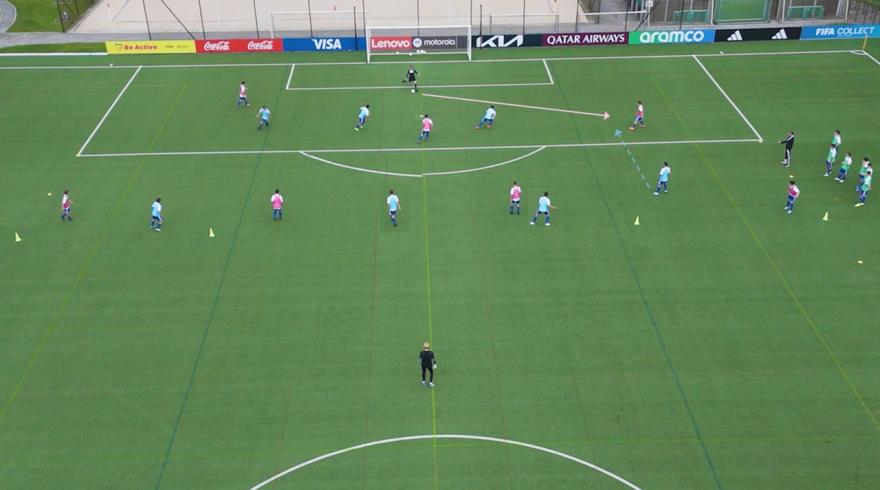
Durchsichern – When a full-back steps out to press, the rest of the backline shifts horizontally or steps up diagonally to:
-
Cover the space behind
-
Prevent vertical passes
-
Maintain balance and compactness
In Schmidt’s aggressive pressing systems, durchsichern ensures the team remains stable even when individuals commit forward. This principle is especially relevant in an 11v11 match scenario — for example, when a full-back presses the opposing full-back, leaving the opponent’s winger temporarily unmarked.
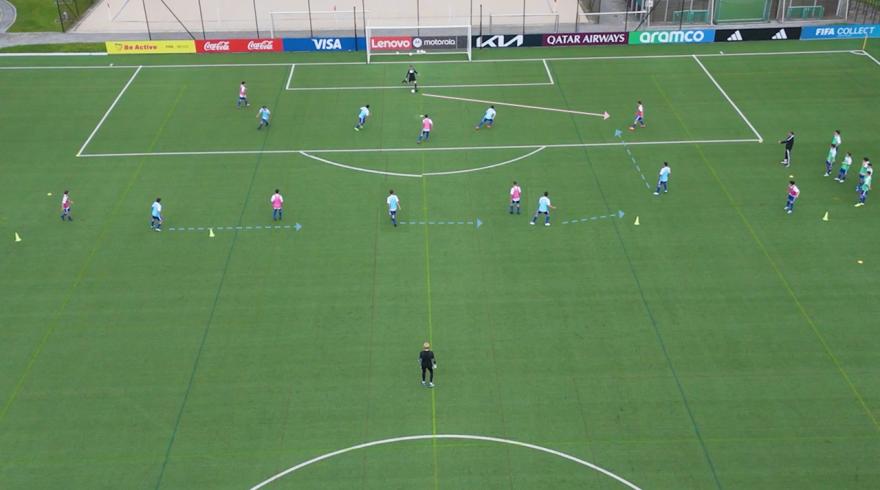
Conclusion
This session demonstrates how Schmidt’s pressing philosophy is brought to life on the training ground. Through competitive structure, tactical rules and intense coaching, players are immersed in the behaviours that define his teams. The result is a training environment that builds not only tactical understanding, but the mentality and intensity required to play Schmidt’s high-octane style.






